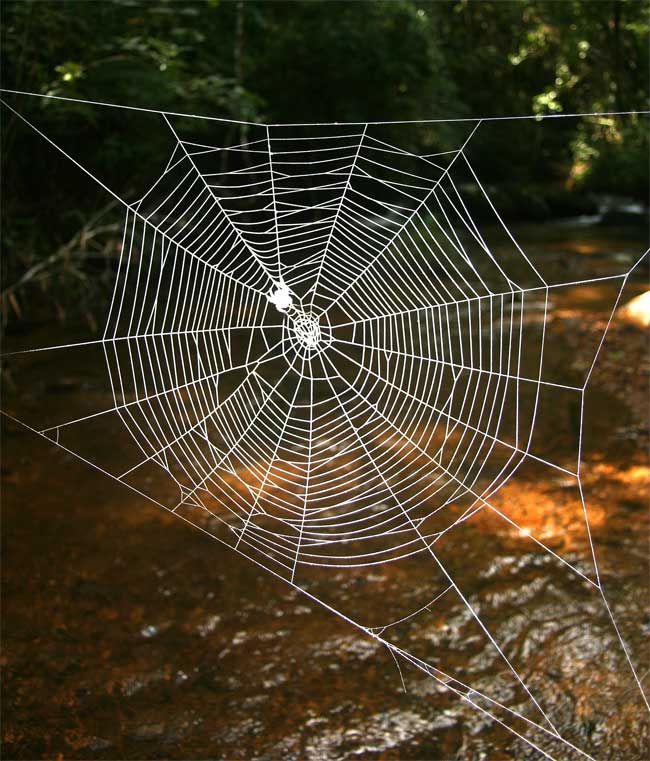Spider-Man's Silk Really Could Stop a Train

In the 2004 movie "Spider-Man 2," the superhero slings silk from his wrists to keep a runaway subway from plunging off the end of the tracks. Far-fetched as the scene may be, a group of physics students say Spidey's webbing material, if it was truly as strong as a spider's silk, could indeed stop a train.
"It is often quoted that spiderwebs are stronger than steel, so we thought it would be interesting to see whether this held true for Spider-Man's scaled-up version," Alex Stone, a 21-year-old physics student at the United Kingdom's University of Leicester, said in a statement. "Considering the subject matter we were surprised to find out that the webbing was portrayed accurately."
Stone and his fellow students calculated that the force needed to stop four New York City subway cars packed with nearly 1,000 people total would be 300,000 newtons, after taking into account the momentum of the train at full speed, the time it takes the train to come to rest after the webs are attached, and the driving force of the subway car.
The students then considered the strength of the webs — estimating the toughness of Spider-Man's silk would need to be almost 500 megajoules per cubic meter — and found it to be comparable with silk from a Darwin's bark spider (Caerostris darwini), an orb-weaver that spins the toughest silk known to science, 10 times stronger than Kevlar. [Photos of Amazing Spiders]
The group said they also calculated the stiffness of Spider-Man's web to be 3.12 gigapascals, which is reasonable, and even on the low-end of real spider silk stiffness that ranges from 1.5 gigapascals to 12 gigapascals in the orb-weavers.
"Having determined these parameters, it can be stated that Spider-Man's webbing is a proportional equivalent of that of a real spider, namely a weaker orb-weaver spider, but curiously, with a toughness more akin to some of the strongest spider silks," the students wrote in a paper in University of Leicester's Journal of Physics Special Topics.
The journal features original short papers written by students to help get them acquainted with the peer-review process. Another recent article in the journal examined what the view out the windows of a vehicle traveling through hyperspace would actually look like. The students who authored that paper said it would be more like a centralized bright glow than the long streaks of starlight seen out the windows of the Millennium Falcon in "Star Wars" and the Starship Enterprise in "Star Trek."
Sign up for the Live Science daily newsletter now
Get the world’s most fascinating discoveries delivered straight to your inbox.
Follow LiveScience on Twitter @livescience. We're also on Facebook & Google+.












